Dutch lager on the Belgian border, in the 1950s
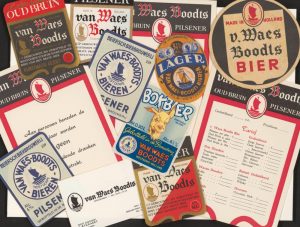 Much of what has been written on beer history in recent years, would not have been there if it hadn’t been for modern digital resources. With one click of the mouse, you find yourself searching through thousands of newspaper pages with the wildest keywords, and retrieving obscure books which otherwise would have cost you an arm and a leg. Although I still leave home frequently to have a look at everything that hasn’t been digitised yet, what has been scanned by archives and libraries at home and abroad is substantial.
Much of what has been written on beer history in recent years, would not have been there if it hadn’t been for modern digital resources. With one click of the mouse, you find yourself searching through thousands of newspaper pages with the wildest keywords, and retrieving obscure books which otherwise would have cost you an arm and a leg. Although I still leave home frequently to have a look at everything that hasn’t been digitised yet, what has been scanned by archives and libraries at home and abroad is substantial.
Take for instance the archive of the Bavarian-style Van Waes-Boodts brewery in the province of Zeeland, the Netherlands. I don’t think I would have travelled the 175 km that separate me from the provincial archives in Middelburg to look at it, but when I learned that they had digitised part of it, I gave in to the temptation to have a look.
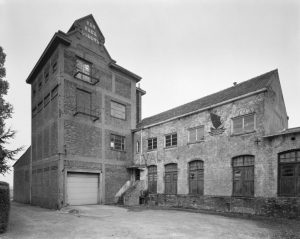 This brewery was located in the village of Westdorpe in the Zeeuws Flanders region, near the Belgian border. It started brewing in 1905 and to my knowledge it has always brewed modern German-style bottom-fermented beers. At first Emile van Waes, the mayor’s son, had attempted to start a brick factory, but when it turned out that locally there were not enough raw materials available, he went to Germany to have himself reschooled as a brewer. At the time, ‘Bavarian’ beer types like pilsener, dortmunder and münchener were very popular in the Netherlands, so Van Waes and his wife Clothilde Boodts wasted no time brewing old-fashioned Dutch beers.
This brewery was located in the village of Westdorpe in the Zeeuws Flanders region, near the Belgian border. It started brewing in 1905 and to my knowledge it has always brewed modern German-style bottom-fermented beers. At first Emile van Waes, the mayor’s son, had attempted to start a brick factory, but when it turned out that locally there were not enough raw materials available, he went to Germany to have himself reschooled as a brewer. At the time, ‘Bavarian’ beer types like pilsener, dortmunder and münchener were very popular in the Netherlands, so Van Waes and his wife Clothilde Boodts wasted no time brewing old-fashioned Dutch beers.
For that reason, I had never been so keen on researching this particular brewery, but here at least brewing records have been preserved, which are now online. No less than 723 scans give an impression of production during the years 1944-1946 and 1950-1959. I don’t know why the records are incomplete: as far as I know the brewery remained active until 1964, and after it was taken over by the Amstel brewery from Amsterdam it was retained as a distribution centre until 1970 or thereabouts.
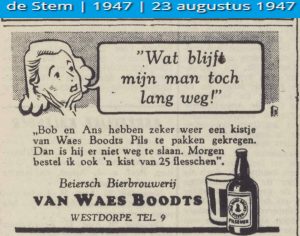 What sort of beers do we find in these records? Interestingly, they include some stuff from the Second World War. Right up to September 1944 they brewed, with the limited resources they had, two beer types: light and dark, at about 2 to 2.5 % ABV. In September production ceased, because the Canadians were busy kicking the Germans out during the Battle for the Scheldt river. After the liberation brewing was resumed, from January 1945 onwards. It wasn’t until October that the first genuine pilsener flowed from the kettles again.
What sort of beers do we find in these records? Interestingly, they include some stuff from the Second World War. Right up to September 1944 they brewed, with the limited resources they had, two beer types: light and dark, at about 2 to 2.5 % ABV. In September production ceased, because the Canadians were busy kicking the Germans out during the Battle for the Scheldt river. After the liberation brewing was resumed, from January 1945 onwards. It wasn’t until October that the first genuine pilsener flowed from the kettles again.
After that, pilsener remained the main product, which is perfectly in line with the preferences of Dutch beer drinkers at the time. The hundreds of scans mainly contain brewing records for pils, pils and more pils. At Van Waes-Boodts in the early 1950s, about 90 to 94% of production, in the late 1950s no less than 98%. It’s odd if you think about it, a brewery located only five kilometres from the Belgian border, stubbornly flooding the market with typically Dutch pils. Sure, in Belgium pilsener was on the rise too, but there top-fermented beers like spéciale belge and various abbey beers flourished as well. Unfortunately I don’t know whether Van Waes-Boodts exported much to Belgium.
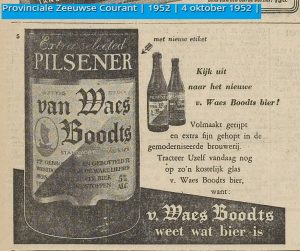 Anyway, what other beers did Van Waes-Boodts make? In the early 1950s, some dark beer. There are also a few brews of export (a slightly heavier type of pils), münchener, bock beer and even some oud bruin (old brown, a sweet beer type, which in the Netherlands was usually made by adding water, sugar and colouring agent to pils; not to be confused with Belgian oud bruin beers). All in all, a typical Dutch line of products for those days.
Anyway, what other beers did Van Waes-Boodts make? In the early 1950s, some dark beer. There are also a few brews of export (a slightly heavier type of pils), münchener, bock beer and even some oud bruin (old brown, a sweet beer type, which in the Netherlands was usually made by adding water, sugar and colouring agent to pils; not to be confused with Belgian oud bruin beers). All in all, a typical Dutch line of products for those days.
In their newsletter, the provincial archives of Zeeland proudly boasted: ‘Homebrewers, pay attention: historical brewing records available for download’, but for homebrewers there’s actually not much to be had. Brewing pilsener is quite hard and to our spoiled palates, they’re quite boring. Still, these records have their historical value, if only to know what a small brewery in a far-away corner of the country was doing at the time.
As said, in the end Van Waes-Boodts couldn’t compete with the big breweries, and in the 1960s it was taken over and then closed by Amstel. Fortunately, the monumental building with its imposing cooling tower was preserved: today, it houses several apartments.
The recipes
Why don’t you brew these four original bottom-fermented beers from 1950s Zeeland! I copied and translated four records rather literally, including a few things that I didn’t find logical. In any case, they used quite a lot of rice and maize/corn. For the details, consult the original scans.
As a side note, in 2018 the provincial archives had a beer (‘Zeeuws blond’) brewed based on a recipe (unfortunately not digitised) for ‘bok-Märzenbier’ from ca. 1932 from the Van Waes-Boodts brewery. I can’t really judge how authentic (including wheat malt?) this was.




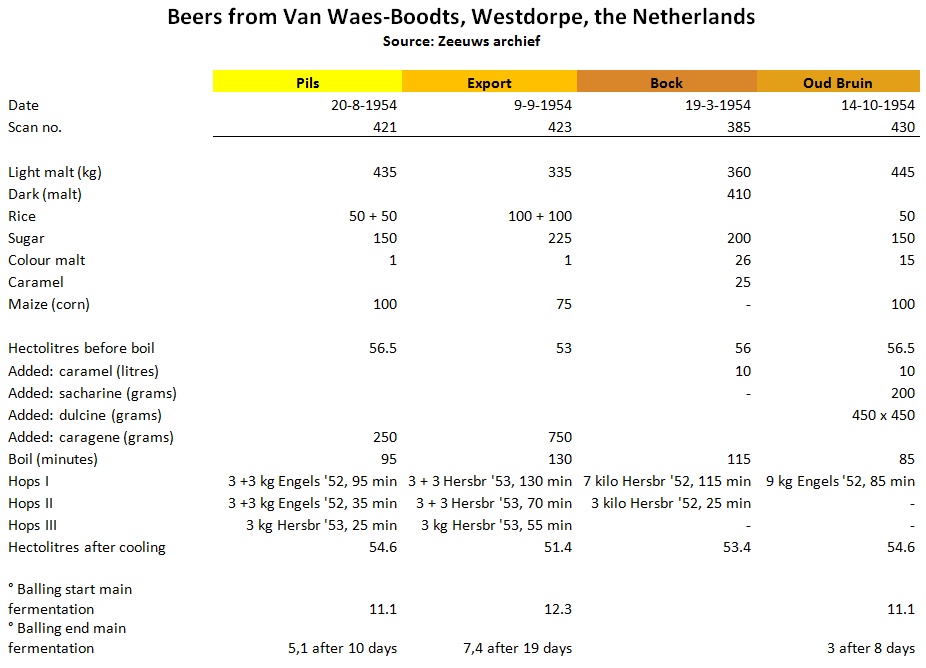


Leave a Reply